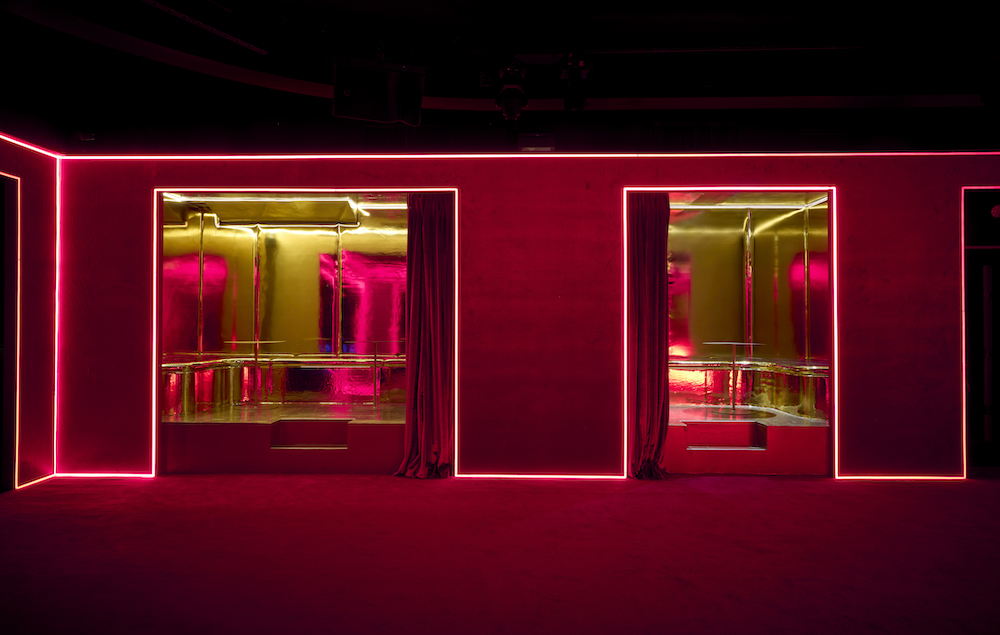This is the last week to see Toyin Ojih Odutola’s exhibition “Of Context and Without” at Jack Shainman in New York. It is her fourth solo show with the gallery, highlighting a new direction for the artist. Ojih Odutola told Whitewall in a recent interview that she wanted to delay “quick or easy reads” of her subjects. “The crux was to explore how I could suspend race, and by extension identity, as an overlying component, and really focus on the construction of identity, particularly the construction of an image, and how often we as a society can fall into prescribed notions of individuals and groups of people as a whole,” she said. Below is more of that conversation.
WHITEWALL: Could you talk a bit about the title of your show, “Of Context and Without,” as it relates to themes of identity?
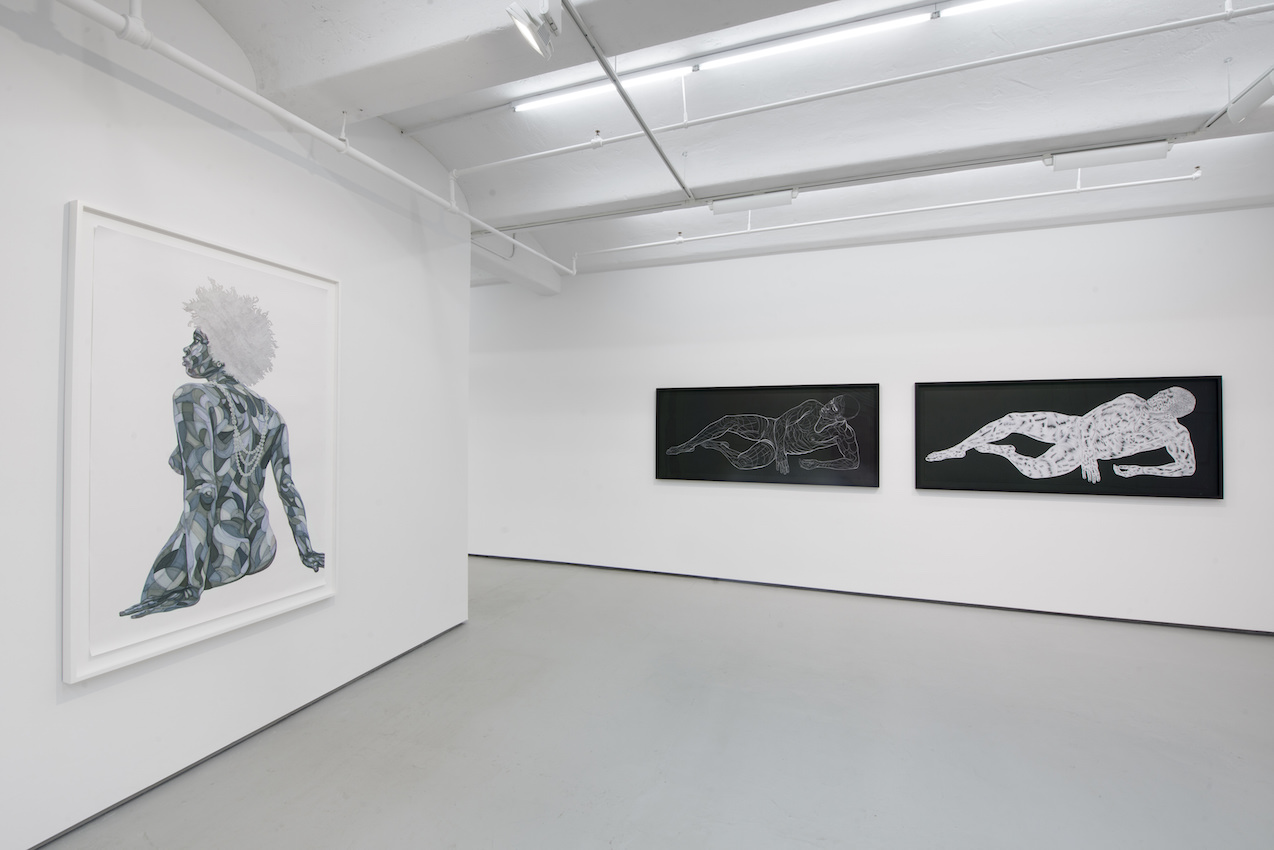
©Toyin Ojih Odutola
Courtesy of the artist and Jack Shainman Gallery, New York
TOYIN OJIH ODUTOLA: “Of Context and Without,” is a play on perception with mark-making, or the “line,” as an agent of identification, and how our attempts at demarcation create more obfuscation than clarity. The central component is the marks that are made to delineate and create singularities within an image. I wanted to see how far I could push this style or language I have been working with for the last ten years into something that eluded even myself. How far could I push it to create something “Other” that felt simultaneously familiar? That was the impetus for me to begin working for the show.
WW: In past shows, you’ve worked with ballpoint pen, pastels and charcoal, and included vivid textile patterns and colors. What influenced your decision to work exclusively with monochromatic, negative and positive space for this show?
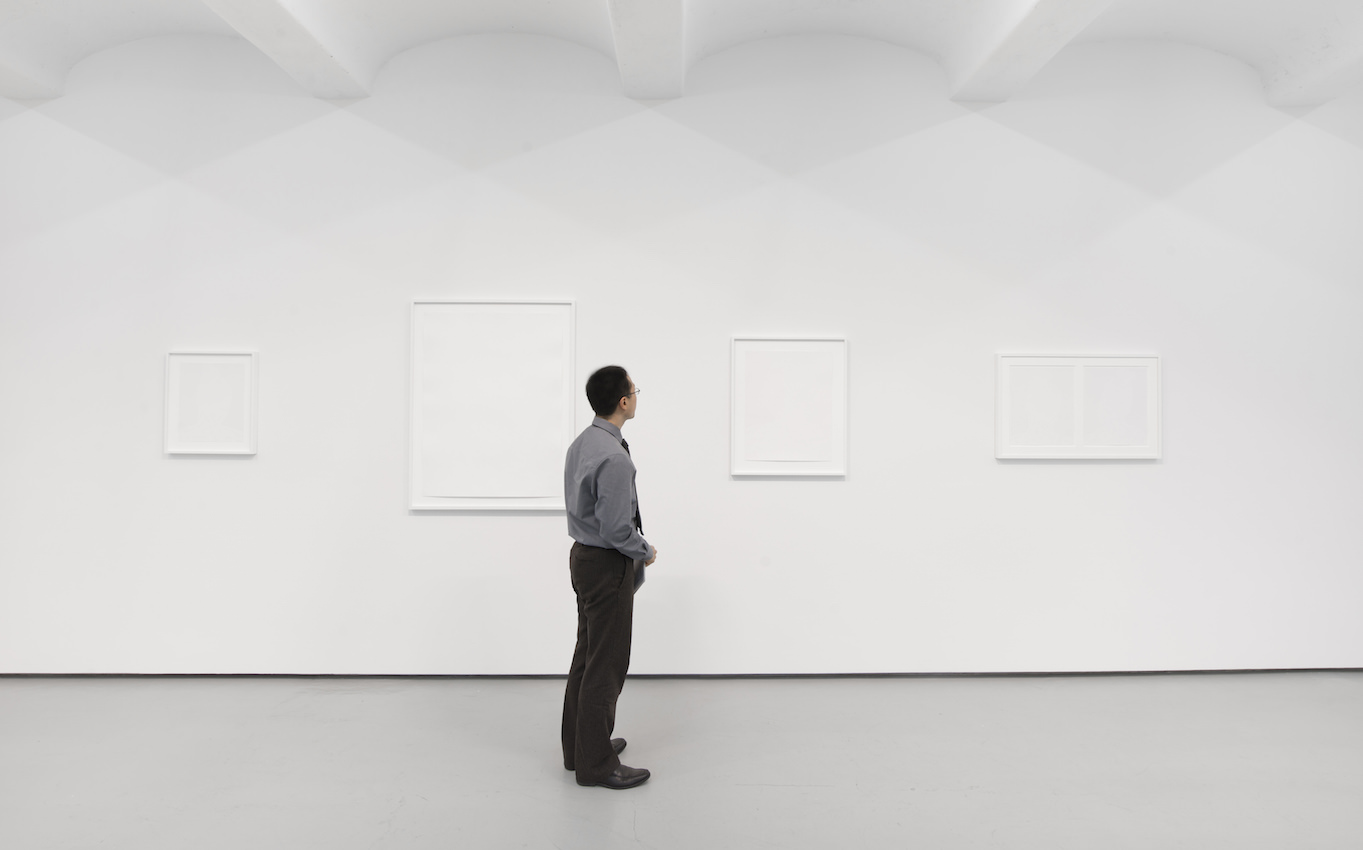
©Toyin Ojih Odutola
Courtesy of the artist and Jack Shainman Gallery, New York
TOO: Materials dictate how I proceed with a series and in turn formulate a show. I don’t like to approach a series without having the chosen tool on hand, first, to formulate the concept, and with each solo exhibition, I attempt to challenge how I master a material. The subjects chosen to explore this material aren’t arbitrary, but they are not my main concern either. I am always looking for a way to explore the “representational” image in a way that I have never seen before.
The turn towards the monochromatic came after my solo exhibition, “Untold Stories,” which opened at the Contemporary Art Museum St. Louis in 2015. I had been working with a polychromatic palette in charcoal and pastel and was mainly concerned with narrative. After completing the work for that show, I wanted to see how far I could push narrative when the indicators and anchors needed to navigate a story weren’t as readily visible. The monochrome as a theme helped me formulate this idea of the shifting perceptions that we seemingly, automatically utilize to read an image: we constantly look for motifs, clues, and recognizable moments that we can fall back on. I wanted to see what I could do if I minimized all of that and have the outcome be just as interesting if not more interesting when the connotations associated with a broader color palette were omitted.
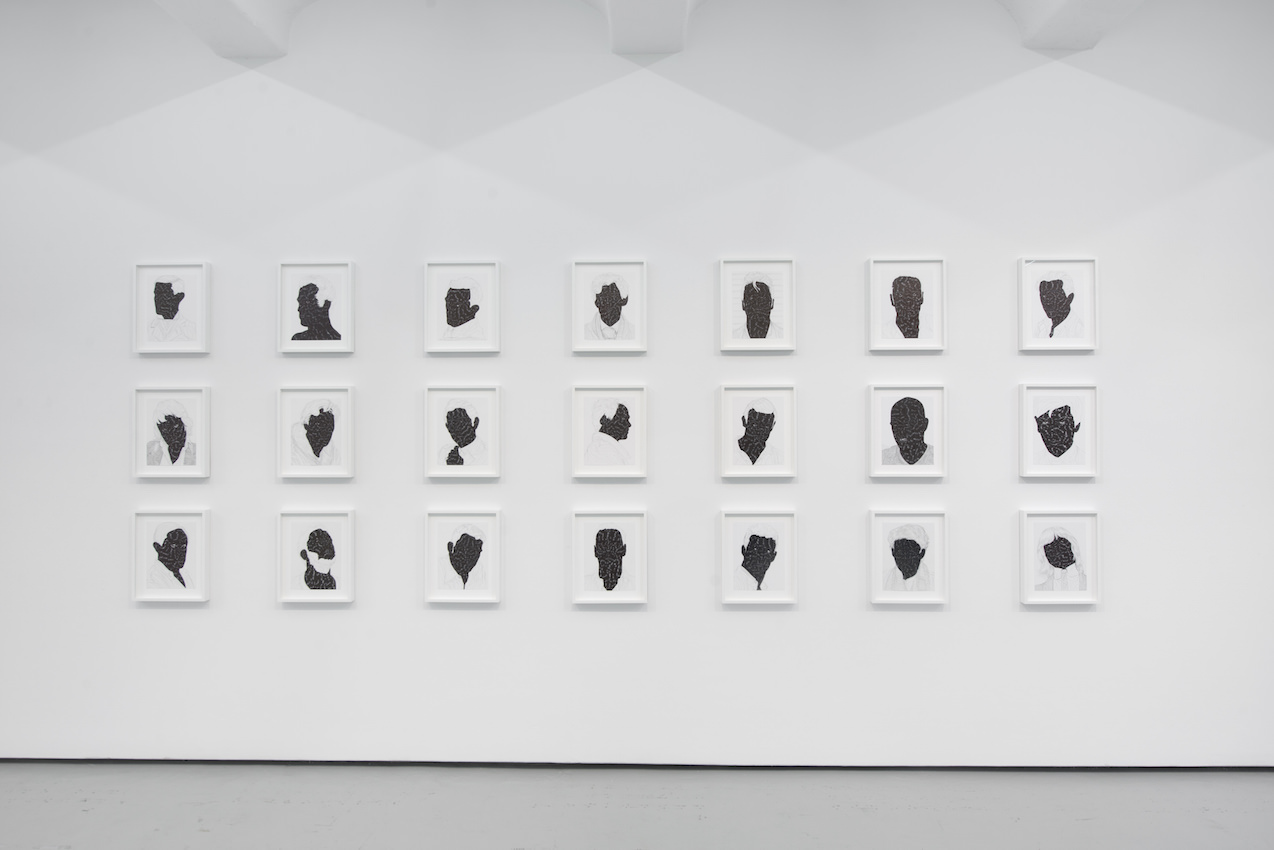
©Toyin Ojih Odutola
Courtesy of the artist and Jack Shainman Gallery, New York
WW: How does a change in medium change your approach to a drawing? For example, what has charcoal allowed you to explore that ballpoint didn’t?
TOO: I like to parallel this to handwriting. When a person begins to write with a pencil or a pen, one’s handwriting changes according to the tool at hand, and that shifts moreso depending on the brand of pen or pencil, and the make-up of those tools on a chemical level. There are other contingents, such as what surface one is writing on—be it paper, board, etc. With your handwriting, you may aim for consistency, but the tools and surfaces always influence the result. That is what excites me most about my drawings. Regardless of whether I am using pen ink or charcoal, etc., there are contradictory elements about these tools that distinctly affect how I proceed with the work and the quality of the visuals of this work.
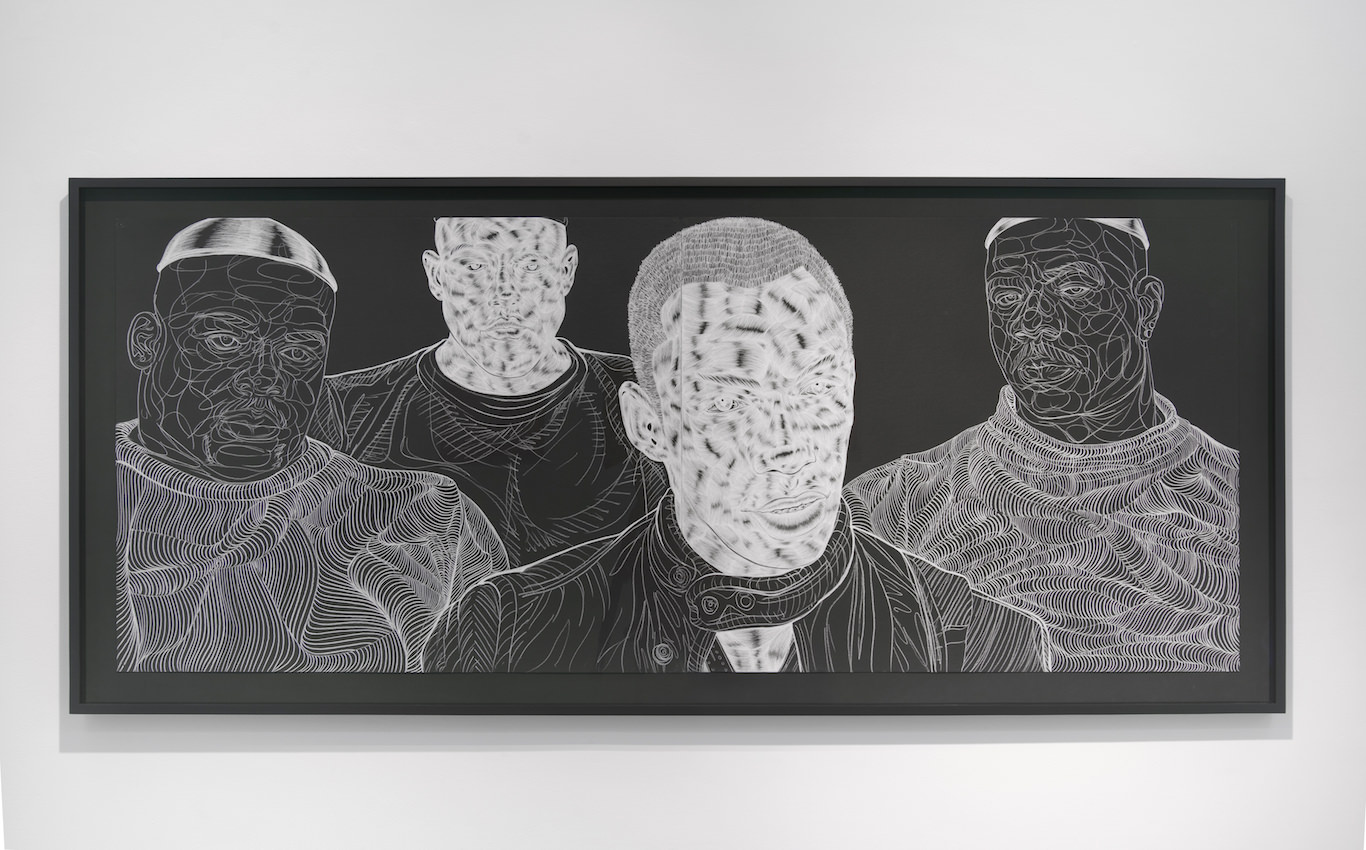
Toyin Ojih Odutola
Courtesy of the artist and Jack Shainman Gallery, New York
The tenant with which everything else orbits around is my style; this language is my handwriting. From there I apply it to each tool, experimenting with the outcomes. No drawing is ever the same, even when I am working with the same tool on the same surface. What black charcoal provides, compared to black pen ink for instance, is a matte finish with a slowly moving tension as opposed to pen ink’s quicker, more rhythmic tension; however, I find that kind of friction in the visual presentation soothing. With the white charcoal, that friction is more harsh: it’s highly contrasting and abrasive, which melts features together, seamlessly, far more than pen ink or even graphite pencil. The white, as a material and as a concept, brings out an austerity that my works in the past have never really achieved. I was uncertain about the reactions to seeing how intensely my marks formulated on the surface. There is a sense of something being activated constantly, regardless of the references I am pulling from. That was something that the material lent itself to: the reference didn’t matter, and it shouldn’t matter, all that remained was how the marks transformed everything.
This same process applied to the marker drawings, in that the soft, meshing together of the parred-down colors, created an almost painterly quality, that seemed like camouflage. These figures and portraits composed of marker became amalgams of things, multifaceted, and slippery in their elusiveness. This provided a read that was two fold, where one could get lost in the make-up of these figures, which could overwhelm with a sense of feeling “unfinished,” while also pulling back to see the overall silhouette in a new and engaging way, as a completed thought process.
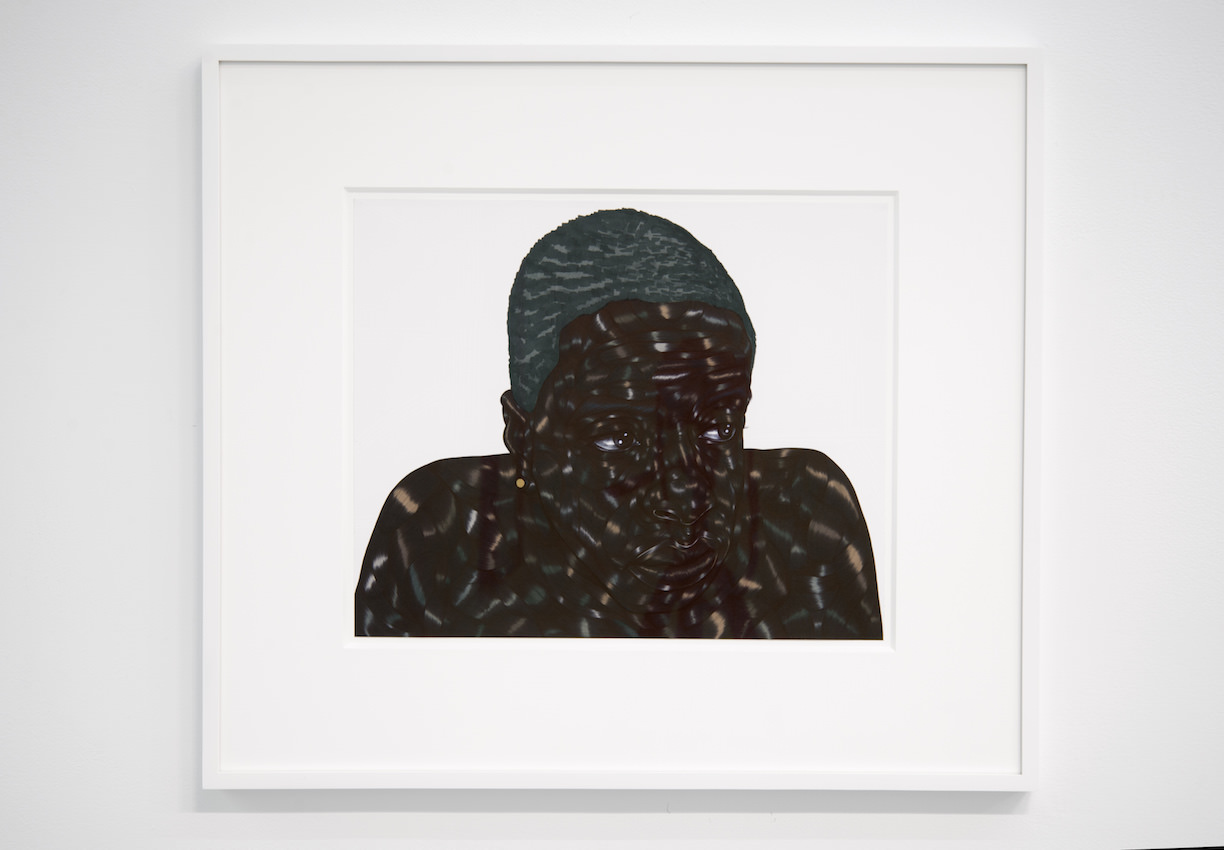
Toyin Ojih Odutola
Untitled
2015
WW: Who are the subjects of the work in this show?
TOO: The subjects of the show are really the marks themselves. There is no representation happening in these portraits, which is odd to think, because the primary function of the portrait is to describe and render a particular sitter at a particular time. As the “subject” (the “line”) does change depending on the surface where the marks rest, the materials I use, and the tones these materials exert when I use them. Beyond that, my aim is not to have people come away from these drawings feeling like I am depicting a specific person or place. There is an intentional suspension of a completed read when that happens and the freedom of interpretation that gives is really exciting to me. That is the sort of freedom I have not had to the pleasure of exploring before this show.
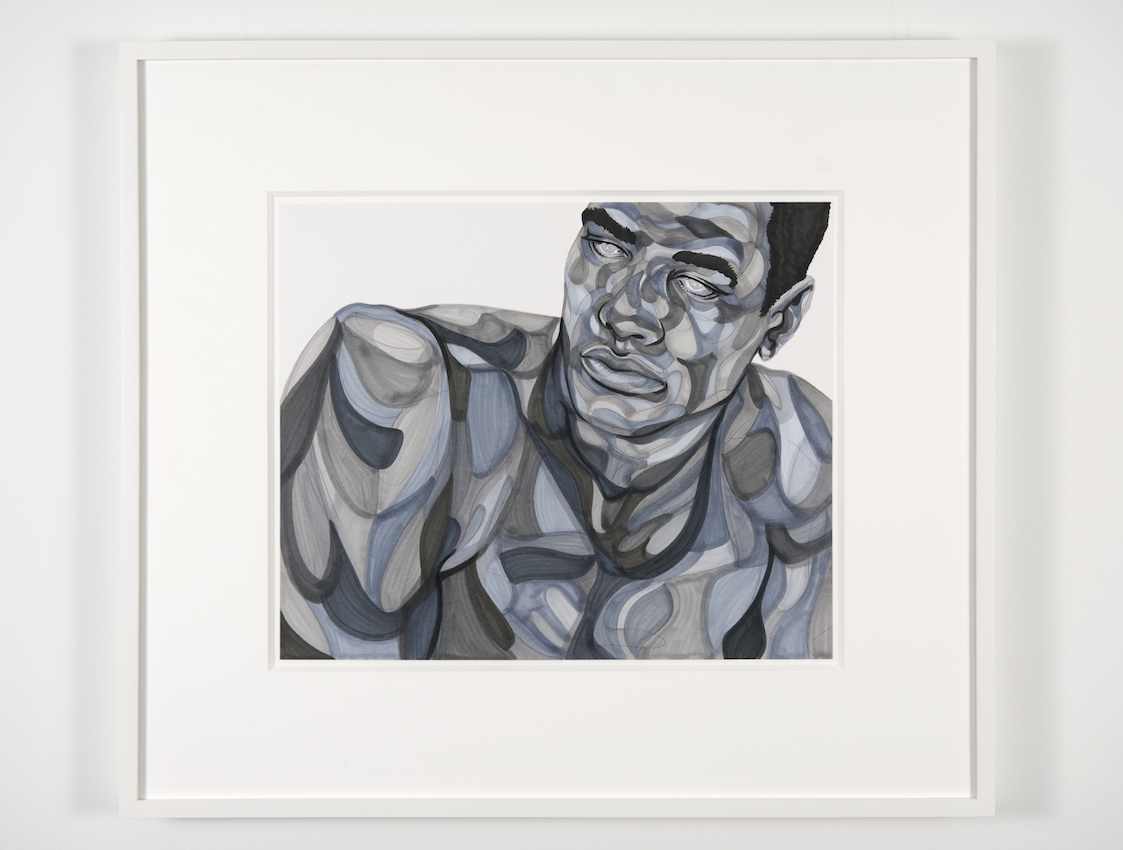
Charcoal, pencil, pen ink, and marker on paper
14 x 17 inches
Courtesy of the artist and Jack Shainman Gallery, New York
WW: I find portraiture interesting because it is as much about the sitter as it is about the artist, and how the artist see’s his or her subject. Could you elaborate on your process of portraiture in this show? How do you approach your subjects—are there certain qualities in a person you seek to highlight?
TOO: I often look to Lynette Yiadom-Boakye’s work as an example of how an artist can utilize the portrait as a platform for fiction. The people she paints aren’t real, they have never existed in our world. They have only ever existed on the canvas. That is such a liberating concept! In the past, I have worked with portraiture with a more traditional bent, portraying myself, family members, or friends with the purpose of getting at an emotional tactility; but with “Untold Stories” and now with “Of Context and Without,” I have moved away from that utility to create portraits which are more of an occasion for marks to happen and by extension a space for me to explore and roam in the realm of the fictive.
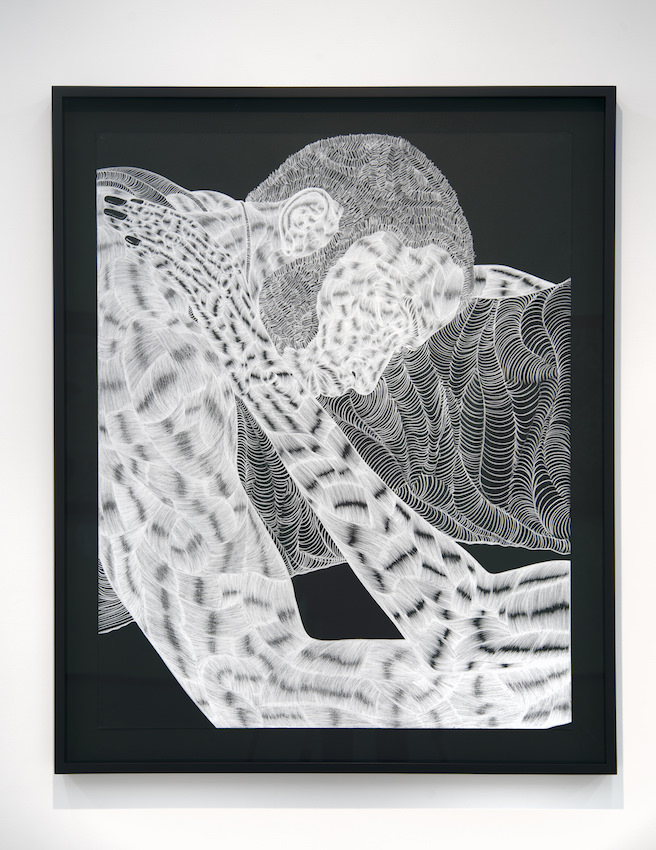
Toyin Ojih Odutola
Mineral Survey
2015
Concerning what I am looking for in a portrait or what engages me in the portrait is composition and the potential for the graphical details I can pack into it. Generally, my work is rather illustrative, and the graphic quality of my drawings are intentional. I find that by applying this graphical style that “Otherness” quality comes out more, and there is so much freedom in that otherness. If I were working towards a more… “realistic” visual, the drawings would not be as interesting to me. In sum, representation is not my interest nor my aim. The key to each drawing’s success, I think, is in how far removed it is from the actual and more into the realm of the imaginative. From there, the narratives that are conjured up get really fascinating.
WW: You’ve previously addressed how your use of black and white doesn’t necessarily indicate the the race of the subject in the drawing. How do you use black and white beyond the contexts of skin tone?
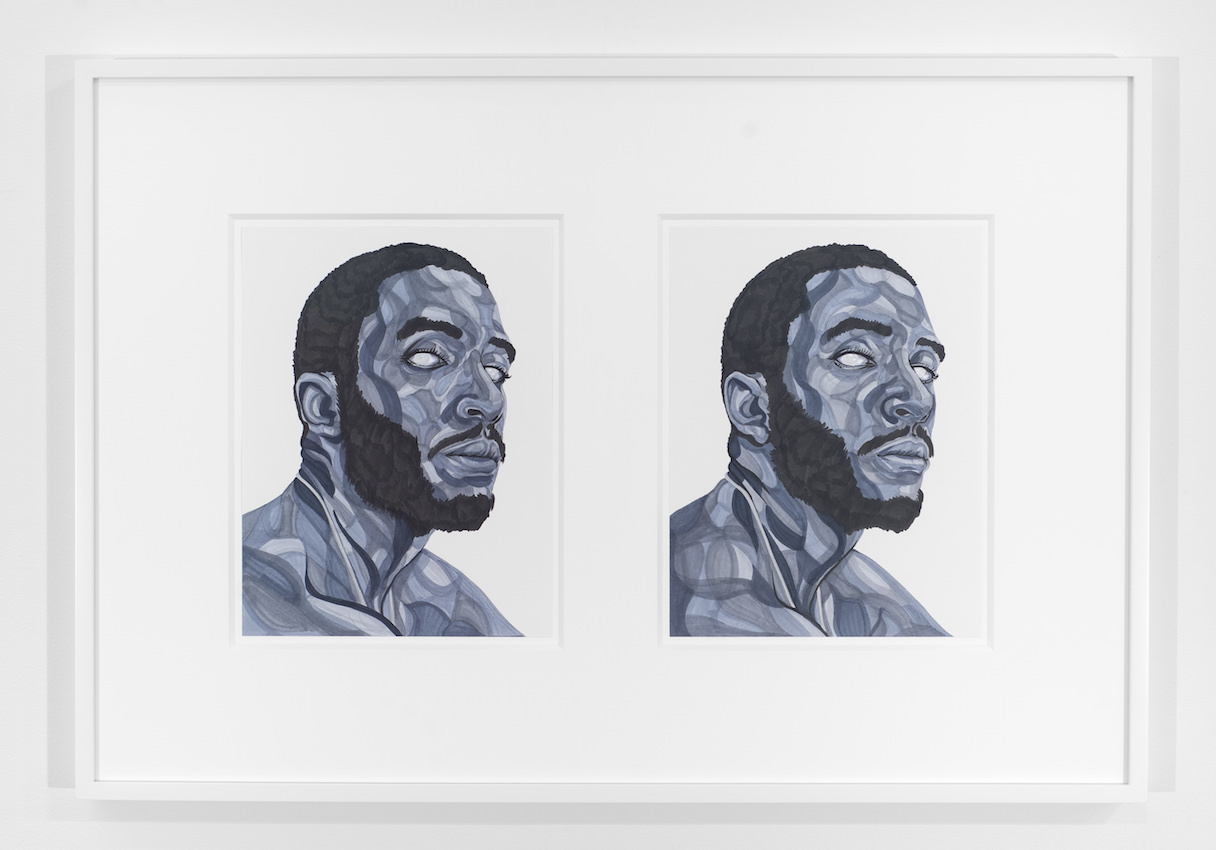
Marker and pencil on paper
TOO: I have to admit, when I started working with black, ballpoint pen ink, it was to get at this concept of Black skin that I could not wrap my head around. I wanted to usurp this notion of Blackness as a monolithic entity and break it into something looser, more fluid and more accessible. The more multifaceted I could get the skin to be, the more I felt that the skin could be removed from staid interpretations and into something more neutral. I felt the same about White as a color. As I proceeded with charcoal, this same notion applied only I began to realize that race was becoming less of a concern and more of an encumbrance. So, the marks began to change, they became heavier, more layered, more sinewy and, ultimately, more elusive. As I mentioned before, the subject was no longer an issue, because the marks on their own proved to be more engaging as an agent to compose the image. Once you remove the context of skin color and race from the image, you get something that is more indicative of how you see an image, which is far deeper that the superficial connotations we associate with color. From there, you question the most basic assessments and with that you can move into places you never thought you could go or, at least, those places you never considered, which, ironically, leads you back to race, begging the question of why we have such limited perceptions in the first place.
WW: Are there any specific works in this collection that are particularly significant to you? Or perhaps a piece that inspired you to make the subsequent collection for this show?
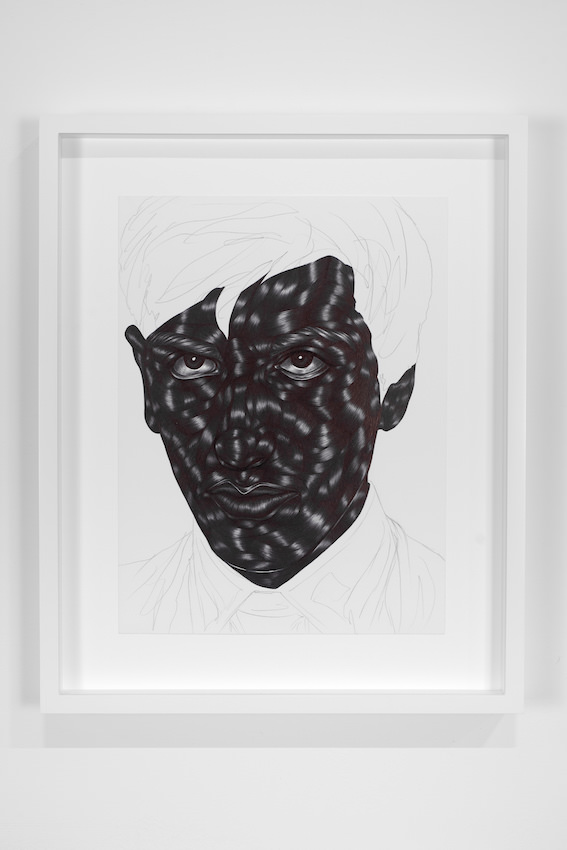
14 x 17 inches
Courtesy of the artist and Jack Shainman Gallery, New York
TOO: There are six drawings in the show that I felt really broke through in terms of method and presented me with possibilities that were freeing in how to proceed with works in the future. They are: Study of Aldo I (2015), Study of Aldo II (2015), The Object is the Technique + the Technique is the Object (2015), Melting into Texture or The Future Grows Impatient (2015), The Guilt of Looking (2014) and The Flavor and the Intent (2015), which was not included in the show, but was on view at Art Basel Miami Beach in December 2015. With the “Aldo” studies, there was really the catalyst for all the charcoal on board pieces in the show. They were the first completed thoughts I finished, back in January 2015. I wasn’t certain about what they represented or even what they would mean, but I was excited for how they liberated me from the specificity of form, or any form of overarching identities. That white/black juxtaposition and contrast was so striking it allowed for me to question how far I could layer the marks and push the narrative. Without the “Aldo” studies, drawings like Melting into Texture… could not have come to light, which create labyrinthine worlds in and of themselves. With the marker pieces, such as The Object is the Technique… and The Flavor and the Intent, I was able to push the elusiveness of form even further, and present the “sketch” drawing as a finished piece. The monochromatic palette enhanced the possibilities of what a figure could be composed of and highlighted the construct of the form. And finally, with drawings like The Guilt of Looking, I arrived at a verisimilitude and an Otherness I hadn’t investigated before.
The quality of the graphite lent itself seamlessly to that of my past pen ink drawings; however, what it revealed was a visual quality not possible with pen ink: a muted tone and an activating sheen that changed depending on where one stood when engaging with the drawing directly. All of the drawings in “Of Context and Without” have provided me with more possibilities than any series of works I have done in the past, and from there I plan on pushing the marks and materials on hand even further to more expansive spaces of thought and narrative.
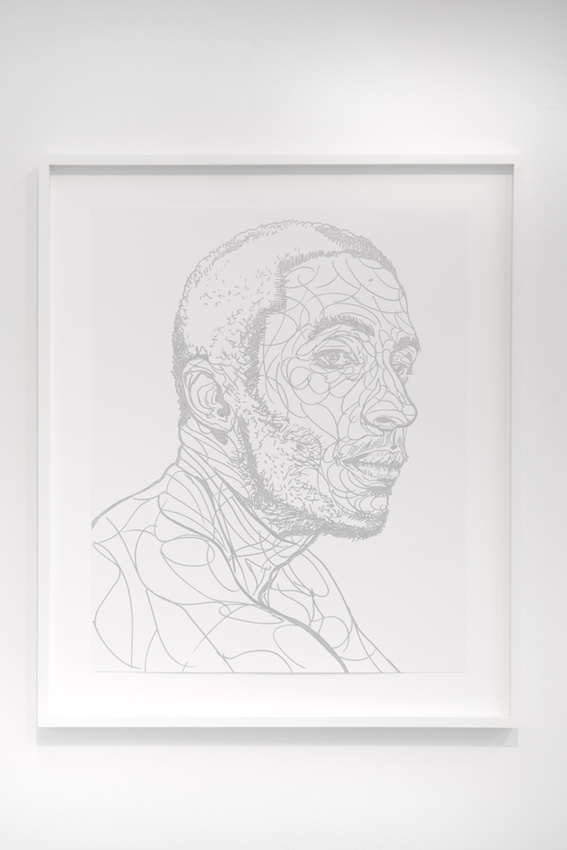
Toyin Ojih Odutola
And She Accepted This
2015
Charcoal on board
“Of Context and Without” is on view through January 30 at Jack Shainman gallery, 513 West 20th Street.







